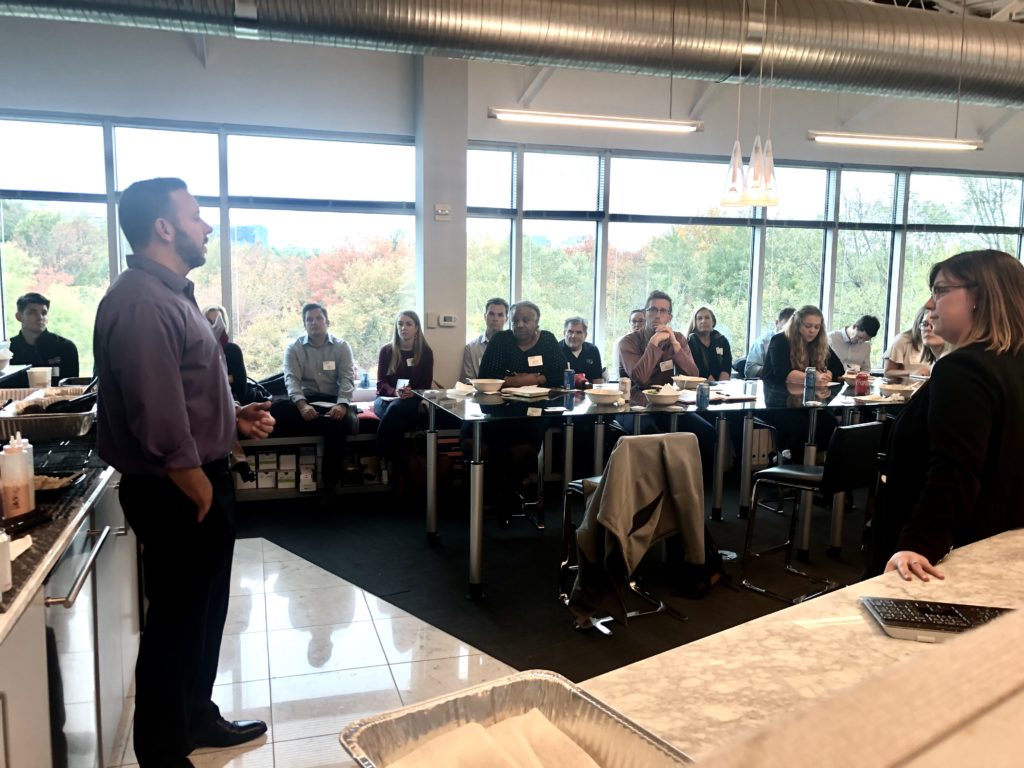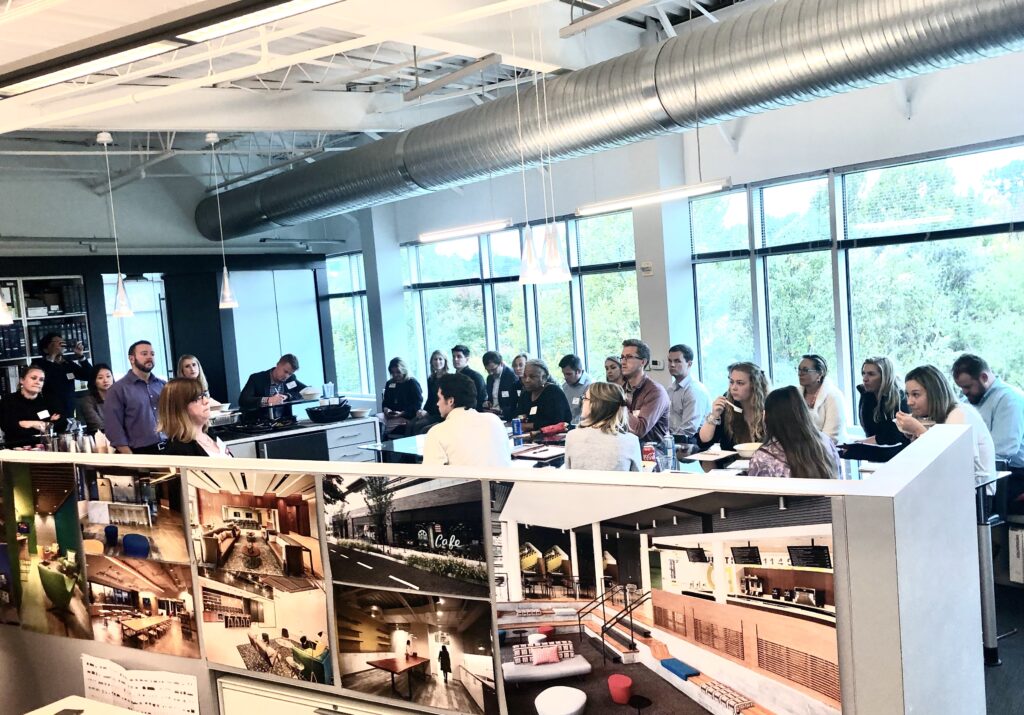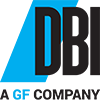On Tuesday, Oct 22, DBI Architects hosted a “Building Code Crash Course.” Presented as part of the NAIOP Northern Virginia “Lunch & Learn” series, Robyn Rubino, of DBI Architects, and Nick Marrow, of GPI/Greenman-Pedersen Inc., spoke about egress, occupancy loads, fixture and mechanical calculations, efficiency in lighting, occupancy sensors, daylighting, and more. The sold-out session was held at the DBI offices in Reston, VA. Members of NAIOP Commercial Real Estate Development Association from across the region attended.

When building codes change, the stakes can be high. Building owners, developers, and property managers can face significant costs in change orders, if project plans are not up-to-date. That’s why DBI and GPI put this presentation together. The informative 60- to 90-minute session was developed to demystify recent changes in building codes.
DBI and GPI intend to make the presentation available to property managers, building owners, commercial real estate brokers, and construction managers upon request.

“Working in the regional commercial real estate market as we do,” Ms. Rubino said, “we want to help all interested parties understand the regulations, how they affect costs and timelines, and what the effects can be, if the code is not followed.”
Ms. Rubino has “7 Takeaway Tips” to share:
- NFPA 101 calculates open workspaces as Concentrated Business – that is, 50 SF/person, as the Life Safety Code introduced in 2015. This is causing a higher load on floors, which could affect egress path loads of the building, plumbing fixture calculations, etc.
- Designers should calculate and analyze load calculations before leases are signed. Make sure you are covered.
- Virginia is still utilizing the 20% rule in the Virginia Existing Building Code [VEBC]. Reminder. . . you must be able to prove that you are not more than 20% over.
- Reusing existing fluorescent light fixtures is not going to meet new energy codes, so don’t ask!
- Daylight zone has been revised per International Energy Conservation Code [IECC] 2015, 1:1 ratio for lights within window proximity. For example, 10’ high windows require fixtures within 10’ of windows to have daylighting controls.
- Landlords/Building owners should make sure they are collecting as-built conditions and keeping records of tenant build-outs. This will help with proving they are not over the 20% factor for plumbing fixtures (VEBC). Code analysis can be determined by base building drawings for UL/Fire Ratings, etc.
- Remember, early planning and communication is key when navigating the breadth of codes within our unique region. Lean on our code experts to guide you through the process.
If you would like Ms. Rubino and Mr. Marrow to present the “Code Crash Course” to your group, please contact DBI Architects at 703-787-0882.

